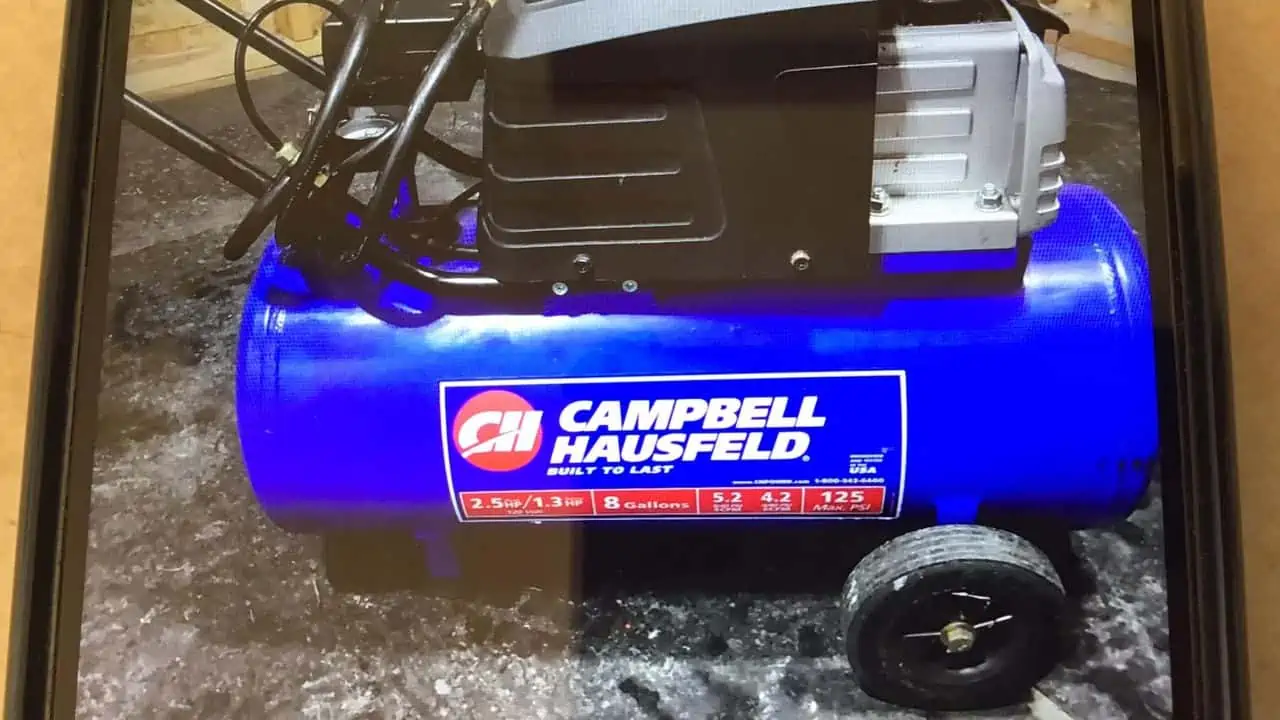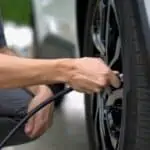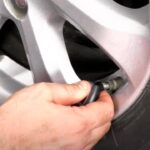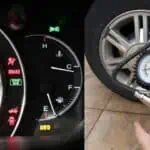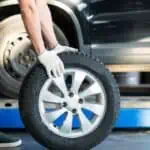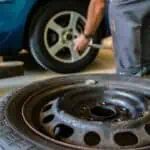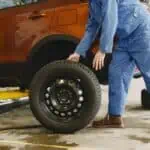The recommended tire pressure for an 80 psi max is 35 psi. This is the minimum amount of pressure that should be in each tire to avoid a blowout or other serious accidents. Overinflating your tires can cause them to wear out more quickly and may lead to a loss of control while driving.
If you have ever wondered what the recommended tire pressure is for an 80 psi max, wonder no more! The correct answer is 32 psi. This is the perfect pressure for your tires, and it will help to keep them inflated properly.
Overinflating your tires can lead to a blowout, so it is important to follow this guideline. If you are ever unsure about the proper tire pressure for your vehicle, consult your owner’s manual or ask a professional mechanic.
What is the Recommended Tire Pressure for 80 Psi Max?
What Psi Should My Tires Be If Max is 80?
If you’re wondering what psi (pounds per square inch) your tires should be if the maximum is 80, there are a few things to keep in mind. First, every car is different and has specific recommended tire pressure levels. You can usually find this information in your car’s owner’s manual or on a sticker inside the driver’s door frame.
If you can’t find it there, you can also look up the recommended tire pressure for your specific car model online. Once you know what the recommended tire pressure is for your car, inflate your tires to that level.
However, it’s important to keep in mind that the recommended tire pressure for your car is only a starting point.
The ideal tire pressure for your particular situation may be higher or lower than the manufacturer’s recommendation. For example, if you frequently drive on rough roads or in hot weather, you may want to increase your tire pressure by a few psi to prevent flats and improve handling. Conversely, if you do mostly highway driving in cooler weather, you might be able to get away with slightly lower tire pressure without any negative effects.
The bottom line is that there is no one-size-fits-all answer when it comes to setting your tires’ psi level. Just make sure that they’re inflated to at least the minimum recommended level and adjust from there based on driving conditions and personal preference.
Is 80 Psi Normal for a Tire?
For most passenger cars, the standard tire pressure is around 32 psi to 35 psi in each tire. The 80 psi you’re seeing is likely the maximum air pressure that can be safely put into the tire.
Should Tires Be Filled to Max Psi?
Most carmakers recommend that tires be inflated to the maximum pressure listed on the sidewall. That number is the tire’s safe limit, not necessarily the best pressure for fuel economy or comfort. Overinflated tires can be less safe and wear out faster.
If you’re looking to maximize fuel economy, Consumer Reports says you should inflate your tires to the middle of their range. For example, if the max psi is 44, filling them to 36 psi would give you optimal fuel efficiency without sacrificing too much safety or tire life. Of course, every car is different, so it’s always best to consult your owner’s manual before making any changes to your tire pressure.
And no matter what, make sure your tires are properly inflated before hitting the road!
What is the Recommended Tire Pressure for 65 Psi Max?
The recommended tire pressure for a car with 65 psi max is 32 psi. This is the optimal pressure for the tires and will help to prevent any premature wear and tear. Overinflating the tires can cause them to burst, so it is important to check the pressure regularly and adjust as needed.
Running 80 Psi Tires at 65 Psi
If you’re like most people, you probably think that the higher the psi (pounds per square inch), the better your car’s tires will perform. After all, more air pressure means more support for the tire, right? Well, not necessarily.
Running your tires at too high of a psi can have negative effects on both your car’s performance and your safety. Here’s why: when you inflate a tire beyond its recommended psi, it puts extra strain on the tire walls. This can cause them to weaken over time and eventually fail while you’re driving – not something you want to happen!
Additionally, inflated tires provide less contact with the road surface, which can lead to decreased traction and stability. This is especially dangerous in wet or icy conditions. So what’s the ideal psi for your car’s tires?
It varies depending on the make and model of your vehicle, as well as the load you’re carrying ( passengers and cargo ). However, as a general rule of thumb, most experts recommend inflating your tires to between 30-35 psi. This provides a good balance of support and contact with the road surface – giving you optimum performance and safety.
Max Tire Pressure Vs Recommended Tire Pressure
There are a few things to consider when thinking about what tire pressure is best for your vehicle. The “max” tire pressure is the absolute highest that the manufacturer recommends for that particular tire. The recommended tire pressure, however, may be different than the max depending on the load that will be carried in the vehicle.
It’s important to know both numbers so that you can make an informed decision about how much air to put in your tires. Overinflating your tires above the max can lead to problems such as premature wear, loss of traction, and even blowouts. On the other hand, underinflating your tires below the recommended level can also cause issues like decreased fuel efficiency and increased wear on certain parts of the tire.
So what’s the right amount of pressure? It depends on what you’ll be using your vehicle for. If you’re carrying a lot of weight or driving in off-road conditions, you may want to inflate your tires closer to the max rating.
If you’re mostly driving on paved roads with a light load, then staying closer to the recommended level should be fine. Ultimately it’s up to you to decide what trade-offs you’re willing to make between performance, fuel efficiency, and tire life.
Should I Increase Tire Pressure for a Heavy Load
If you’re carrying a heavy load, you might be wondering if you should increase your tire pressure. The answer is maybe. It depends on the weight of your load and the type of tires you have.
If you have light-duty tires, they may not be able to handle the extra weight and pressure. You could end up damaging your tires or having a blowout. If you have heavy-duty tires, they can usually handle the extra weight and pressure.
But it’s always a good idea to check with the manufacturer or your local tire dealer before increasing tire pressure.
What is the Recommended Tire Pressure for 60 Psi Max
The recommended tire pressure for 60 psi max is 35-38 psi. This is the ideal range for most tires, providing a good balance of grip and comfort. If you’re looking to maximize grip, you can go lower (32-34 psi), but this will sacrifice some comfort.
For a more comfortable ride, aim for the upper end of this range (37-38 psi).
Truck Tire Pressure Front Vs Rear
Most people don’t think about their truck’s tire pressure unless they have a flat. But did you know that there is a big difference between the front and rear tires? The front tires are responsible for steering, while the rear ones provide power.
That means that the ideal tire pressure for your truck will vary depending on which end of the vehicle you’re driving. If you’re mostly driving in city traffic, then you’ll want to keep your front tire pressure a bit higher than your rear. This will give you better maneuverability and help prevent any unwanted wheel spin.
On the other hand, if you do a lot of highway driving, then it’s best to keep your rear tire pressure slightly higher than your front. This will help with stability and fuel economy. Of course, every truck is different, so it’s always best to consult your owner’s manual for specific recommendations.
But in general, these tips should help you get the most out of your truck no matter where the road takes you!
What is the Recommended Tire Pressure for 51 Psi Max
It is no secret that maintaining proper tire pressure is crucial to the longevity and performance of your tires. But what is the recommended tire pressure for 51 psi max?
To start, it is important to know that there are two types of tire pressure – cold inflation pressure and hot inflation pressure.
Cold inflation pressure is the amount of air pressure in your tires when they are cold, while hot inflation pressure is the amount of air pressure in your tires when they are warm.
The recommended tire pressure for 51 psi max varies depending on whether you are looking at cold or hot inflation pressures. For cold inflation pressures, the recommendation is 35 psi for all four tires.
However, for hot inflation pressures, the recommendation changes to 38 psi for the front tires and 40 psi for the rear tires.
It is important to note that these recommendations are only meant as a general guide. Your specific vehicle may have different requirements, so always be sure to consult your owner’s manual or ask a professional before making any adjustments to your tire pressure.
Conclusion
The recommended tire pressure for an 80 psi max is 32 psi. This is the optimal pressure for your tires, and it will help to improve your gas mileage and make your ride smoother.
